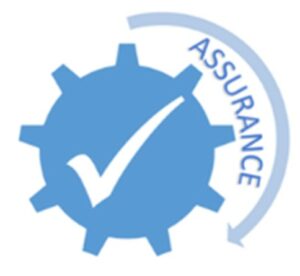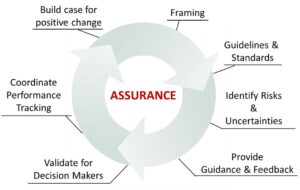Posted on January 7, 2022 by Lisa Ward
Hello and welcome to Rose & Associates’ blog on Assurance!
By Marc Bond
Collectively Rose & Associates (R&A) has 100 years of experience leading and serving on E&P assurance teams. Along with our many years of consulting and supporting industry assurance teams, R&A is in a unique position to share our learnings and observations on the subject. Our aim is to help improve the effectiveness of assurance and subsequent decision-making, leading to more predictive portfolios.
Throughout this article series, we aim to discuss the concept of exploration assurance, exploring many facets such as the case for assurance, the role of assurance in decision-making, recommended assurance best practices, assurance team behaviors and biases, personal experiences, and pitfalls and challenges. Contributors will include R&A professionals as well as industry leaders experienced with assurance.
We welcome feedback and personal experiences dealing with assurance and encourage you to post your comments.
ASSURANCE: WHAT IS IT AND WHY IS IT SO IMPORTANT
Assurance describes the process of providing objective, independent, and consistent reality and perspective checks on exploration project characterization. When performed well, it can provide justified confidence to decision-makers in investment decisions and enhance predictive accuracy.
The assurance process begins with a review of a team’s assessment, then the assurance team offers recommendations for further technical work that can clarify the uncertainty, and lastly, all reach a collaborative prediction. Given their independence from the work and wider perspective, the assurance team is not as easily influenced by some of the biases associated with the pride of prospect ownership nor local management influence.
I recently finished reading Kahneman et al Noise: A Flaw in Human Judgment (2021). Since the 1970s Professor Kahneman has established himself as the thought leader on decision theory (including a Nobel prize in Economics), so any book he writes is a must-read when you are in our line of work. Whilst the authors discussed assurance techniques, there was no mention of the concept of assurance. This one practice would have gone a long way in alleviating many of the inconsistent decisions the authors addressed. Frustratingly, there are few peer-reviewed publications covering assurance.
In all instances where judgments and decisions are needed, consistent and predictable outcomes depend upon the accuracy of predictions. Accurate predictions lead to a consistently reliable portfolio, worthy of repeat funding. Left to the individual assessor or team, the predicted outcomes are often inconsistent and inaccurate. The reason for this has many causes, biases being a key component (see attached link to the blog series on bias). The widespread overestimation of resources is a common problem for the oil and gas industry, resulting in loss of value.
Validation of technical assessments by assurance has been shown to contribute to consistent and predictive portfolio management, and thus improved business performance. When done well, assurance will provide additional and diverse perspectives on prospect assessment, share better practices, identify weaknesses in evaluations and assumptions, provide alternatives, and foster consistency. The assurance team should be seen as the ally of the technical team, with a common goal of delivering maximum success from the company’s exploration portfolio.
The assurance process should utilize an integrated approach working with the technical teams to ensure best practices and consistent evaluations. In addition to assistance from staff on the characterization of opportunities, the assurance team will also interact with management to aid in opportunity comparison and support their decision-making.
The following figure outlines the assurance process.
The process starts with the framing of the exploration project to determine the appropriate work program for evaluation. As input into assurance, there should be methods to detect and rectify flaws in analysis and ensure all products (e.g., reservoir models, seismic interpretation and mapping, etc.) adhere to the appropriate standards.
One of the cornerstones of the assurance process is early engagement. The assurance team will consider the key subsurface risks and uncertainties. They will then provide guidance and support to the technical team for best practice pre-drill resource and chance characterization. During the assurance review, the assurance team aims to validate the evaluation (e.g., resource distribution and chance of success), providing confidence to the decision-makers.
After consistency is introduced, calibration comes about from performance tracking, designed to analyze outcomes relative to predictions and capture learnings that feedback in future assessments.
The assurance process should be fit for purpose. Organizations should be clear on what the business requires from assurance, and the process should be designed to deliver these objectives. For all of the stages, there may be multiple cycles depending on the scope and complexity of the project. For example, large complex opportunities typically require several reviews, whereas a small, simple, or inexpensive opportunity may only need a single review.
Criticisms of Assurance Exist, Such as:
- Assurance is a distraction and can create delays in project completion.
- Assurance requires dedicated, experienced personnel who could be used elsewhere in the business.
- Assurance team members are not as familiar with the basin/play/prospect to the degree of the technical team.
- Assurance teams may focus on only the ‘numbers’, ignoring the geology and potential of an opportunity.
- Assurance team members may be biased.
- Feedback from the assurance team may be dogmatic and stifle creativity.
- The influence of assurance experts on assessment detracts from the role of the supervisor in managing the technical evaluation.
- The divergence between the assurance and technical teams’ views can create additional stress and delay in the system.
Whilst these are indeed important considerations, they are not a problem with assurance itself. Any flaws with the design or implementation of the assurance process can all be addressed and alleviated.
Marc was the Subsurface Assurance Manager with BG Group for 6 years, responsible for the company-wide subsurface assurance for all projects, including Exploration, Appraisal and Development ventures and conventional and unconventional resources. He helped create the Risk Coordinators Network in 2008, which remains active. Following the assurance role, he was the Chief Geophysicist at BG.
REFERENCE CITED
Kahneman, Daniel, Sibony, Olivier, and Sunstein, Cass, 2021, Noise: A Flaw in Human Judgment, William Collins, 454p.
This Assurance Blog series is coordinated and edited by Marc Bond, Gary Citron, and Doug Weaver.

